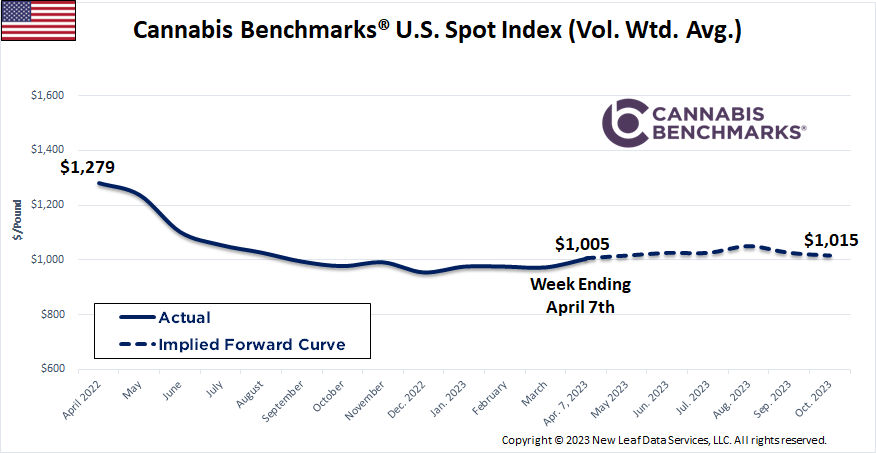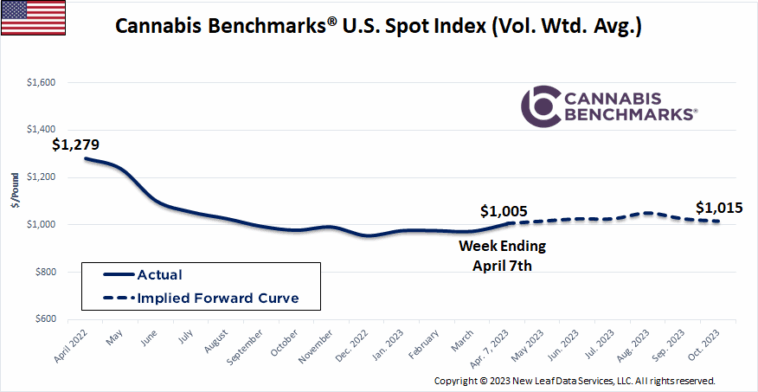
Cookie Consent and Online Privacy: A Closer Look at Digital Data Collection
The digital world is constantly evolving, and with it comes a host of tricky parts for both businesses and users when it comes to privacy. Modern web platforms, including giants like YouTube, have put cookie consent and data usage policies at center stage. In this opinion editorial, we take a closer look at the legal implications of online data collection, how websites manage consent, and the challenges they face as they try to figure a path through an ever-changing legal landscape. We also consider the experience of everyday users, who must find their way through not only the literal web but also through a maze of legal and technical requirements.
At first glance, the language used on many websites to explain cookie usage can seem overwhelming. Phrases like “we use cookies and data to deliver and maintain our services” might appear straightforward, but they conceal a tangled web of legal requirements, privacy concerns, and marketing ambitions. For those who aren’t legal experts, the twists and turns of consent documentation may be confusing bits or even nerve-racking, all while the average user is trying to simply enjoy their content.
Legal Implications of Data Privacy and Consent Policies
Digital privacy isn’t just a buzzword—it’s a legal minefield. With new privacy laws being introduced all the time, companies have to stay on their toes to deliver up-to-date privacy notices and consent forms that meet legal standards. On one hand, websites must deliver their services efficiently; on the other, they must respect users’ rights. The task might seem intimidating, especially when the law demands clear disclosure and user-friendly consent mechanisms.
The legal requirements for online privacy involve:
- Clear and explicit notification about the types of data collected
- Easy-to-understand options to accept or reject data collection
- Frequent updates to reflect current legal standards
- Transparency in advertising and user tracking practices
For example, when a website asks users to “accept all” cookies or “reject all” for non-essential cookies, it is balancing on the fine line between aggressive marketing strategies and compliance with privacy laws. The need for transparency in these processes is key. Users must have the tools to steer through their privacy options without feeling overwhelmed by legal jargon.
Understanding the Role of Cookies in Modern Digital Platforms
Cookies are small bits of data that websites store on a user’s device. They help deliver personalized content, manage sessions, and even track user engagement. However, the use of cookies—especially those that track activity across multiple sites—has raised questions about privacy, data security, and consent. The language that describes these functions is often full of problems, not only for the companies deploying them but also for users trying to figure out what each option means.
Many users see messages like “We use cookies to develop new services and measure the effectiveness of ads” and must decide whether to take the wheel. The outline of these policies is crucial because it represents a confluence of marketing needs and regulatory demands. Detailed tables summarizing the types of cookies can help simplify the process:
| Type of Cookie | Function | Consent Requirement |
|---|---|---|
| Essential Cookies | Maintain basic functionality, e.g., session management | No explicit consent required |
| Performance Cookies | Track site usage and improve functionality | Consent recommended |
| Marketing Cookies | Provide personalized ads and track user behavior | Explicit consent required |
The importance of such clarity cannot be overstated. It is super important that websites explain these functions in plain language—even if some may still find the details a bit tangled. Users are not required to have a deep understanding of the hidden complexities, but they do need a roadmap to make informed decisions.
Tracking User Consent: A Matter of Trust and Transparency
At its core, online consent is about trust. Digital platforms promise to protect users while at the same time delivering personalized services that rely on data collection. However, the process of obtaining consent itself is riddle with tension. Users frequently encounter multilayered requests to opt in or opt out of data usage, ad personalization, and even the tailoring of content based on their previous viewing history. Such processes are not only off-putting but can also seem downright intimidating for those not well-versed in online privacy rules.
Transparency is key. The legal community has continuously emphasized that clarity in these messages is no longer optional—it’s the law. Site visitors must receive essential information in a straightforward manner, whether they are signing in to a service or exploring new media content. Public expectations have also shifted; users now expect to be fully informed about how their data is used, whether it is for standard operations, monitoring site performance, or crafting a customized experience.
Working Through the Legal and Technical Twists of Consent Mechanisms
In many respects, managing your way through cookie and privacy policies demands that companies not only comply with legal standards but also present their policies in an inviting and accessible manner. Aside from the legal mandates, digital platforms face the practical challenge of implementing a system that respects user choice while still capturing important data. This balance is full of problems, as it must cater to both stringent legal requirements and the ever-evolving expectations of digital consumers.
Let’s break down some of the subtle parts that sites must address:
- Consent Granularity: Users should have the option to opt in for certain types of cookies while refusing others, allowing them to maintain as much privacy as possible without losing access to essential services.
- Multilingual Considerations: In a globalized environment, platforms like YouTube must ensure that consent forms are available in numerous languages. The translation process, if done incorrectly, can add extra tiny twists that confuse the user.
- Dynamic Content Customization: These requirements are not static. Legal frameworks evolve, and platforms must update their consent dialogues to keep pace with new regulations such as the GDPR in Europe or the CCPA in California.
Companies are proactively creating guides and instructional material on how to sort out their privacy settings. In doing so, they acknowledge that figuring a path through a blend of essential legal standards and user expectations is neither linear nor without its bumps along the way.
Balancing Essential Service Delivery with User Privacy Rights
When websites outline their cookie policies, they commit to a dual mandate: delivering seamless services and protecting individual privacy rights. This commitment is super important not only for compliance with laws but also for maintaining the trust of users. For example, the explanation provided before signing into a platform sometimes offers a choice between “Accept all” and “Reject all,” a dichotomy that reflects the challenge of balancing service efficiency with user autonomy.
It’s helpful to analyze what each option entails:
- Accept All: This option may include both essential and non-essential data collection. While it promises a smoother user experience through personalized content and ads, it also opens the door to extended tracking by marketing algorithms.
- Reject All: This simpler alternative usually limits data collection to essential functionalities only, which might result in receiving generic content but ensures a higher level of privacy.
Users often face a nerve-racking decision-making process during this stage, as they weigh the benefits of personalization against potential privacy risks. It is a classic scenario where transparency and clear communication could significantly ease user anxiety, transforming a potentially overwhelming decision into one that feels informed and controlled.
Privacy Policies: Breaking Down the Fine Points of Compliance
Privacy policies are frequently described as litmus tests for a company’s commitment to protecting personal data. Yet, these documents can be a patchwork of legal jargon and fine shades of detail that require patience to understand fully. Despite the intimidating legal language, the essence of a good privacy policy is simplicity and clarity. Here are some elements that make a policy effective:
- Plain Language: Avoiding overly technical expressions, a good policy uses everyday terms to explain user rights and data handling practices.
- Logical Formatting: Broken into digestible sections with headings, lists, and even tables, clarity in formatting helps users figure a path through the policy’s more confusing bits.
- Examples and Scenarios: Practical examples—like how cookies might personalize a homepage or deliver ads based on recent searches—can help demystify abstract legal concepts.
- Regular Updates: As data practices and laws change, so too should privacy policies. Regular revisions that capture the nitty-gritty of recent legal standards are a clear sign of a responsible digital platform.
For instance, if a policy states that “non-personalized content and ads are influenced by general location,” this should be accompanied by an explanation of what constitutes “general location” and how this information is obtained. Such a breakdown not only builds trust but also saves users from encountering hidden complexities later on.
Data Footprints and the Tracking of User Behavior: Legal and Ethical Concerns
The tracking of user behavior through cookies and data analytics has long been a tense issue, laden with both legal and ethical dilemmas. On one side of the argument lies the undeniable benefit of personalized user experiences; on the other, the potential for user data to be misused or inadequately secured. The sensitive nature of this balancing act is reflected in every cookie consent banner that pops up on a website.
Here are a few factors driving the debate:
- User Privacy vs. Business Goals: Businesses naturally aim for a personalized service that can cater to individual preferences. However, when customization crosses into the territory of tracking every online move, it can infringe upon a user’s right to privacy.
- Transparency in Data Sharing: Websites that share data with third-party advertisers need to clearly outline how, when, and why this sharing occurs. The process should provide users with enough information to decide if they’re comfortable with such practices.
- Legal Accountability: With regulations such as the European GDPR and the California CCPA, non-compliance can result in hefty fines and damage to a company’s reputation. It’s not only about avoiding penalties—it’s about ensuring that user trust is maintained over the long haul.
When users encounter these issues on a day-to-day basis—whether checking their privacy settings or reading through extensive legal disclaimers—they may feel as if they are left to deal with the complicated pieces of rapidly shifting digital policies. Legal experts argue that simplifying the language and ensuring that consent mechanisms are straightforward and accessible can bridge the gap between robust marketing capabilities and the protection of individual rights.
Finding Your Path Through Global Privacy Regulations
One of the most challenging aspects of online privacy is the need to adapt to different legal frameworks around the world. Websites that operate internationally must consider the rules imposed by multiple jurisdictions. For example, content designed for European audiences must comply with the GDPR, while American users are covered by distinct local legislations such as the CCPA. This gives rise to a multilayered situation where user consent must be managed across a diversity of legal regimes.
Consider the situation as a series of steps:
- Legal Audit: Companies must undertake comprehensive reviews of their data collection practices, ensuring they are in line with international standards.
- Localized Consent Forms: Rather than a one-size-fits-all approach, consent interfaces need to be tailored for cultural and legal expectations. This may include multiple language options and region-specific data handling practices.
- Consistent User Experience: Even with localized content, ensuring that the user experience remains smooth and intuitive is key. Users should be able to manage their privacy settings with minimal effort regardless of their geographical location.
The work required to meet these layered requirements is both significant and often nerve-racking. However, by taking a methodical approach to both legal audits and user interface design, digital platforms can reduce the scattered stress experienced by users and simultaneously remain on the right side of the law.
Practical Steps for Users to Manage Their Online Privacy
Amid this maze of legal obligations and data tracking practices, users must also adopt proactive strategies to protect their own privacy. While the onus is undoubtedly on companies to deliver clear and insightful privacy policies, individuals can and should take steps to dig into, or even poke around, their own privacy settings. Here are several practical approaches:
- Understand Your Consent Options: Read the explanations provided by websites. Look for sections that detail which cookies are essential versus those used for marketing purposes.
- Customize Your Settings: Many platforms provide granular controls—choose what types of data to allow and which to block.
- Regularly Clear Your Cookies: Routine maintenance of your browser cookies can help minimize unwanted tracking over time.
- Utilize Privacy Tools: Explore privacy-focused browser extensions and settings designed to minimize data tracking.
- Stay Informed: Laws and digital practices change. Keeping abreast of the latest developments in data privacy can help you make informed decisions every time you visit a site.
It might be a bit overwhelming at first, but taking a proactive stance helps shift control back into your hands. By engaging with the fine points of your digital rights, you move from a passive consumer into a more empowered participant in the digital economy.
The Business Perspective: Balancing Profit and Privacy in a Digital World
For companies, the legal requirements concerning data tracking are not only about avoiding fines—they also represent a commitment to ethical business practices. Most organizations today understand that their reputation depends on earning and maintaining customer trust. This means they must strike a balance between collecting data for enhanced services and respecting users’ privacy choices.
Key business concerns include:
- User Retention: Transparent data practices result in higher trust, which, in turn, leads to better user engagement and long-term customer loyalty.
- Regulatory Compliance: Noncompliance with privacy laws can result in financial penalties, legal battles, and lasting damage to brand reputation. Companies must take the extra step to ensure their policies are clear and easily accessible.
- Competitive Advantage: Firms that lead in privacy initiatives often stand out in the market. Highlighting user-centric practices can be a strong differentiator in a crowded digital marketplace.
In a business climate that is constantly in flux, companies are increasingly recognizing that attention to the subtle details of privacy isn’t just a technical necessity—it’s a key part of building a brand that users can rely on. This shift towards ethical data handling practices reflects an understanding that credibility, once lost, is difficult to regain.
Charting the Future: Evolving Legal Standards and Digital Innovation
The future promises continued evolution in both digital technology and its corresponding legal frameworks. As new technologies emerge—ranging from artificial intelligence to advanced data analytics—the legal landscape will undoubtedly shift to address these novel developments.
Prospective trends in the area of data privacy and controlling cookie usage include:
- Increased Regulation: As governments around the world observe the rapid pace of digital transformation, we can expect more stringent rules designed to protect consumer privacy. This will likely necessitate even more clarity and user-friendly interfaces in cookie consent dialogues.
- Enhanced User Controls: Future platforms may offer more dynamic and robust privacy settings, allowing users to toggle specific cookie types in real time, thus reducing the intimidating barrier that overly broad policies can present.
- Automation in Compliance: Leveraging AI and machine learning, companies could soon automate significant parts of their compliance processes, updating privacy policies on the fly as new laws take effect. This would help reduce errors and ensure that users always have access to the most up-to-date information.
- Greater International Collaboration: As digital transactions continue to cross borders, international laws might evolve to create more uniform standards that ease the navigation of legal murkiness. Such global collaboration would simplify the user experience while maintaining strict privacy controls.
This forward-looking approach offers hope that the current state of digital privacy, with all its complicated pieces and nerve-racking choices, might eventually give way to systems that are simpler, more transparent, and ultimately more user-friendly.
User Experience and Empowerment: Changing the Narrative Around Consent
One significant shift in the digital privacy discussion is the growing emphasis on user empowerment. Where consent used to be seen as a one-off checkbox, it is now evolving into an ongoing, interactive process. By offering users tools to manage their privacy settings, digital platforms are creating an environment in which users actively participate in the protection of their own data.
This renewed focus on user empowerment is illustrated by several developments:
- Interactive Consent Dashboards: Some companies are introducing dashboards that allow users to see, in real time, what data is being collected and how it is used. This approach helps demystify the process and makes it easier for users to get into the details if they wish to do so.
- Personalized Privacy Settings: Just as content is personalized, so too can privacy options be tailored to fit the needs and preferences of individual users, making the decision process less off-putting.
- User Education Initiatives: Many digital platforms are investing in educational resources designed to inform users about their rights and the specific ways in which their data is handled. Workshops, webinars, and interactive guides are all part of this new trend.
Empowering users isn’t just a trendy marketing tactic; it’s a necessary evolution. When people truly understand the subtle details of how their information is used, they are better equipped to set boundaries. This shift from passive reading to active management of privacy can be seen as a major step forward in the long-run, benefiting users and companies alike.
Bringing Clarity to a World of Confusing Bits
The evolution of digital data practices has, in many cases, outpaced the average user’s ability to stay informed about what each notification implies. The challenge is to take these riddled messages and transform them into clear, straightforward guidance that anyone can understand. Given the current state of global legal frameworks and the rapid pace of digital innovation, such guidance is key.
Some practical strategies to bring clarity to the sometimes intimidating world of digital privacy include:
- Simplifying Legal Jargon: Replacing complicated legal language with everyday terms can help users grasp what is being asked of them, making the experience less nerve-racking.
- Using Visual Aids: Diagrams, flowcharts, and tables can help break down the data collection process and illustrate which aspects are essential and which are optional.
- Offering Live Support: For users who are still confused by the legal documentation, live chat or support lines offer the chance to get real-time answers to their questions.
- Regular Feedback and Updates: Soliciting user feedback about the clarity of consent forms and adjusting them based on direct input will help ensure that the measures remain both effective and user-centric.
These steps are critical in ensuring that the balance between legal compliance and user empowerment is maintained. The old model of lengthy, intimidating policy pages is gradually being replaced by concise and user-friendly information that meets legal standards while remaining accessible to everyone.
Conclusion: Building a Future of Transparent and Trustworthy Digital Practices
The interplay between online consent, cookie usage, and privacy laws reflects some of the most pressing challenges of our digital age. As platforms like YouTube continue to rely on a combination of essential service delivery and targeted marketing, the responsibility of keeping privacy policies clear and accessible becomes super important. Beyond merely meeting legal requirements, these efforts serve as a foundation for trust between digital services and their users.
By streamlining consent forms, breaking down the confusing bits, and adopting clearer language, companies can create a digital environment where users feel safe, informed, and in control of their personal data. In turn, this paves the way for more balanced innovation—one that respects user privacy while driving technological progress. Ultimately, as laws and technologies evolve hand in hand, the dialogue around digital privacy will continue to shape a future built on transparency, trust, and empowerment.
In conclusion, the commitment to clarity and user-friendly language in cookie consent policies is not simply a legal requirement—it is a statement about the future of digital interaction. With efforts to simplify the twisted and sometimes intimidating legal details, both businesses and users can work together to ensure that the digital world remains both innovative and respectful of individual rights. While there are still many challenging parts and nerve-racking moments along the way, the ongoing journey toward a transparent and trustworthy digital landscape is one that benefits us all.
Originally Post From https://www.abc10.com/article/news/local/california-cannabis-excise-tax-increase/103-e55441cc-4c0c-47fd-826b-59bc1e8a5786
Read more about this topic at
What Is A Cookie Notice And Why Do You Need One?
Cookie Consent Examples


